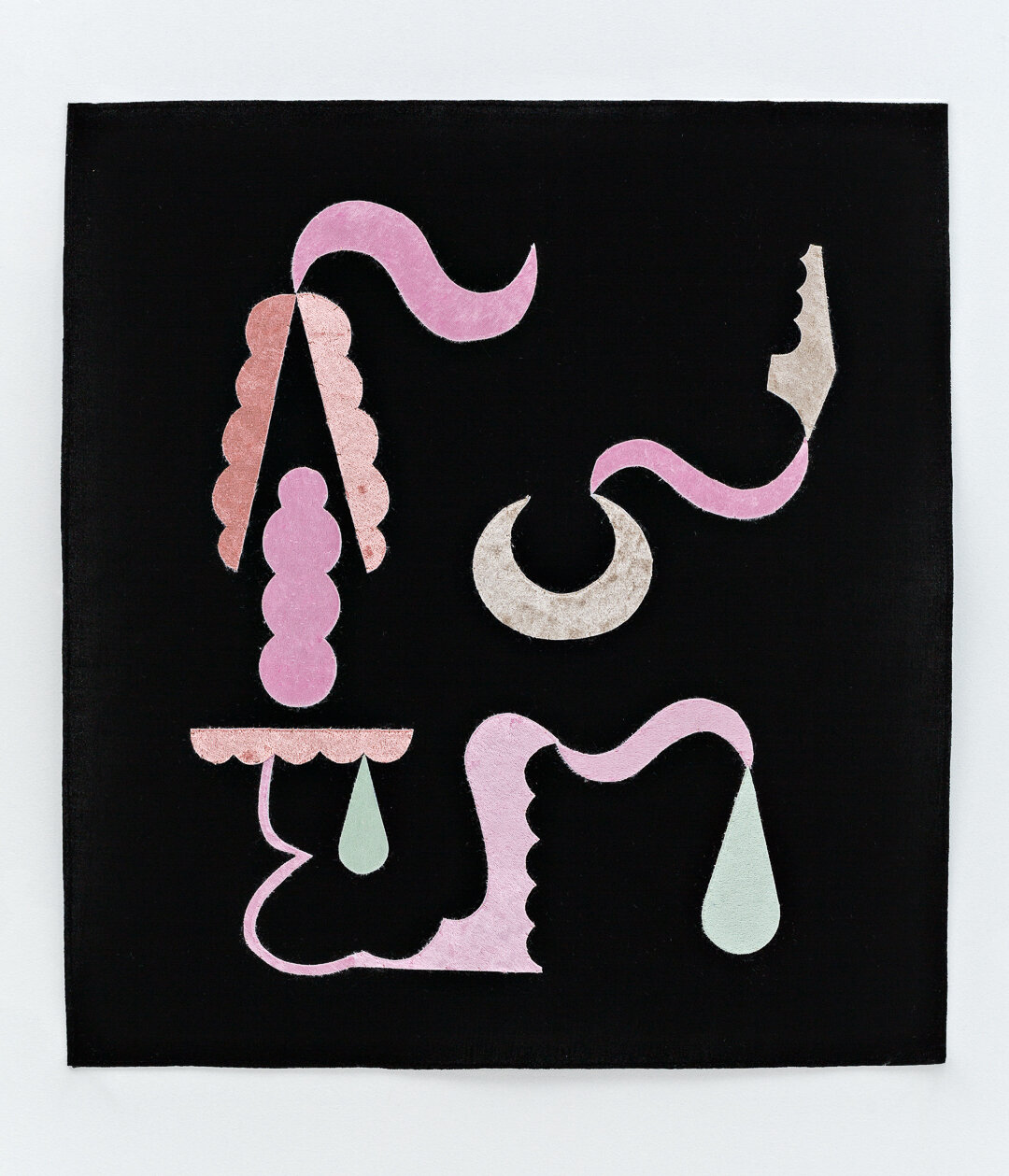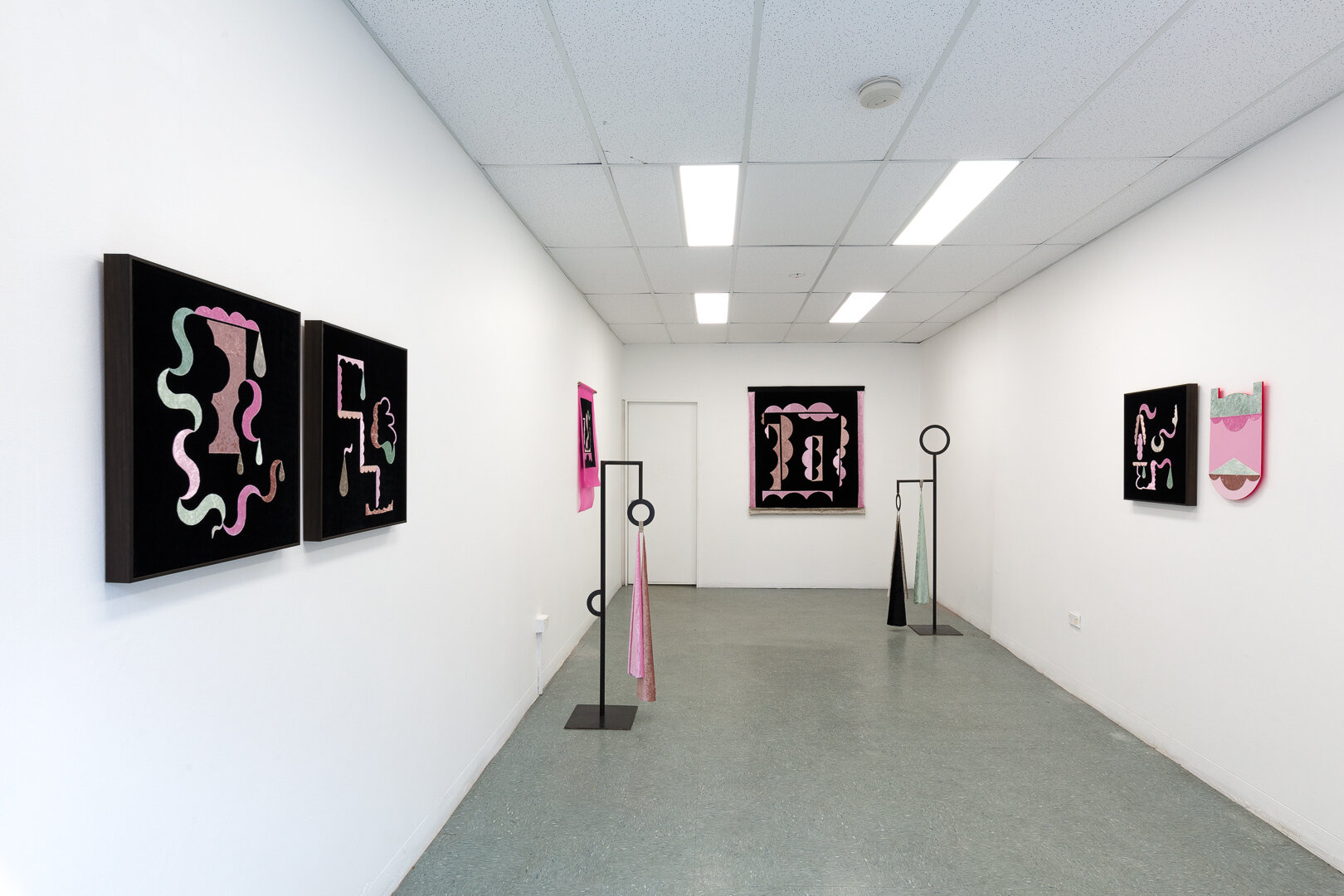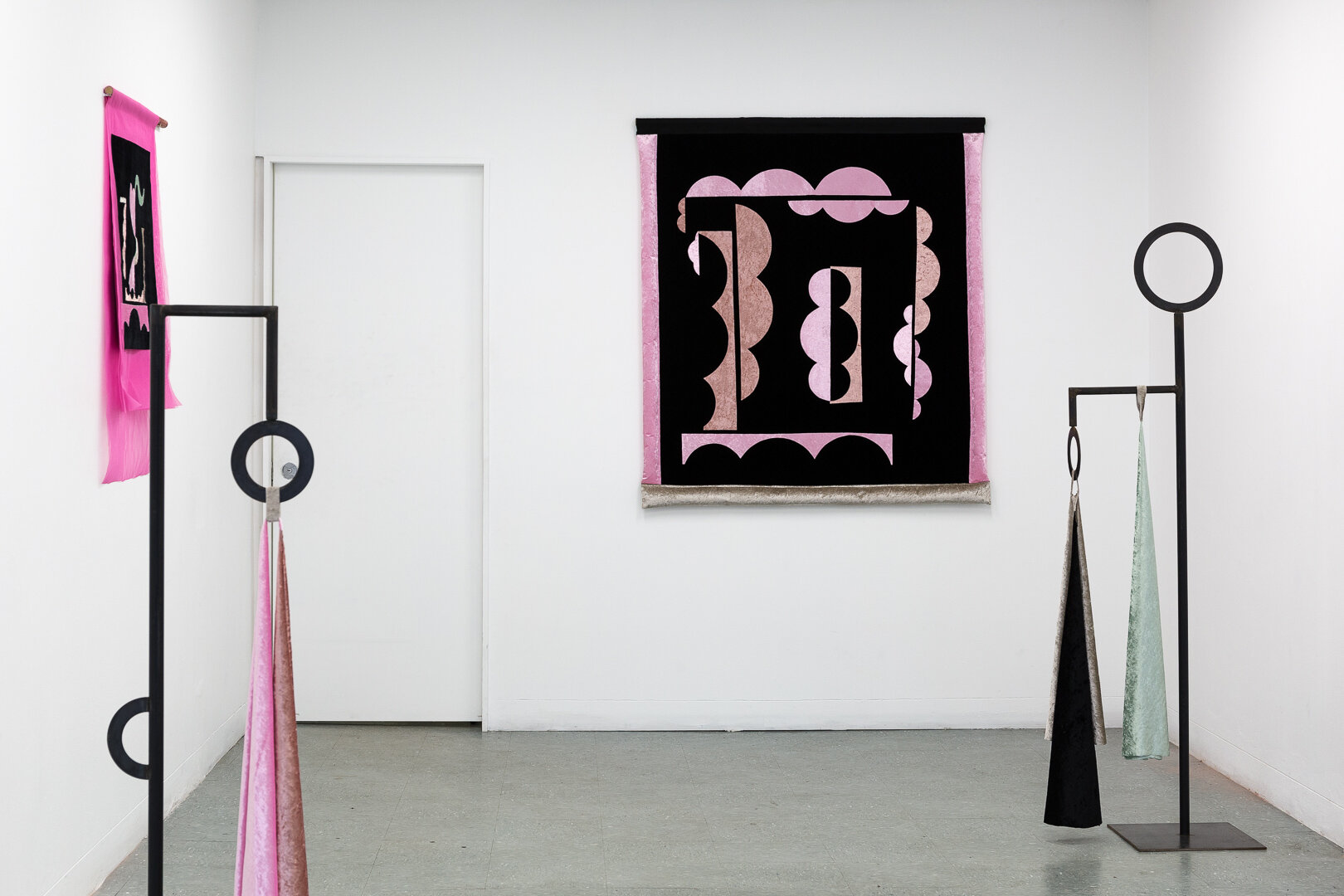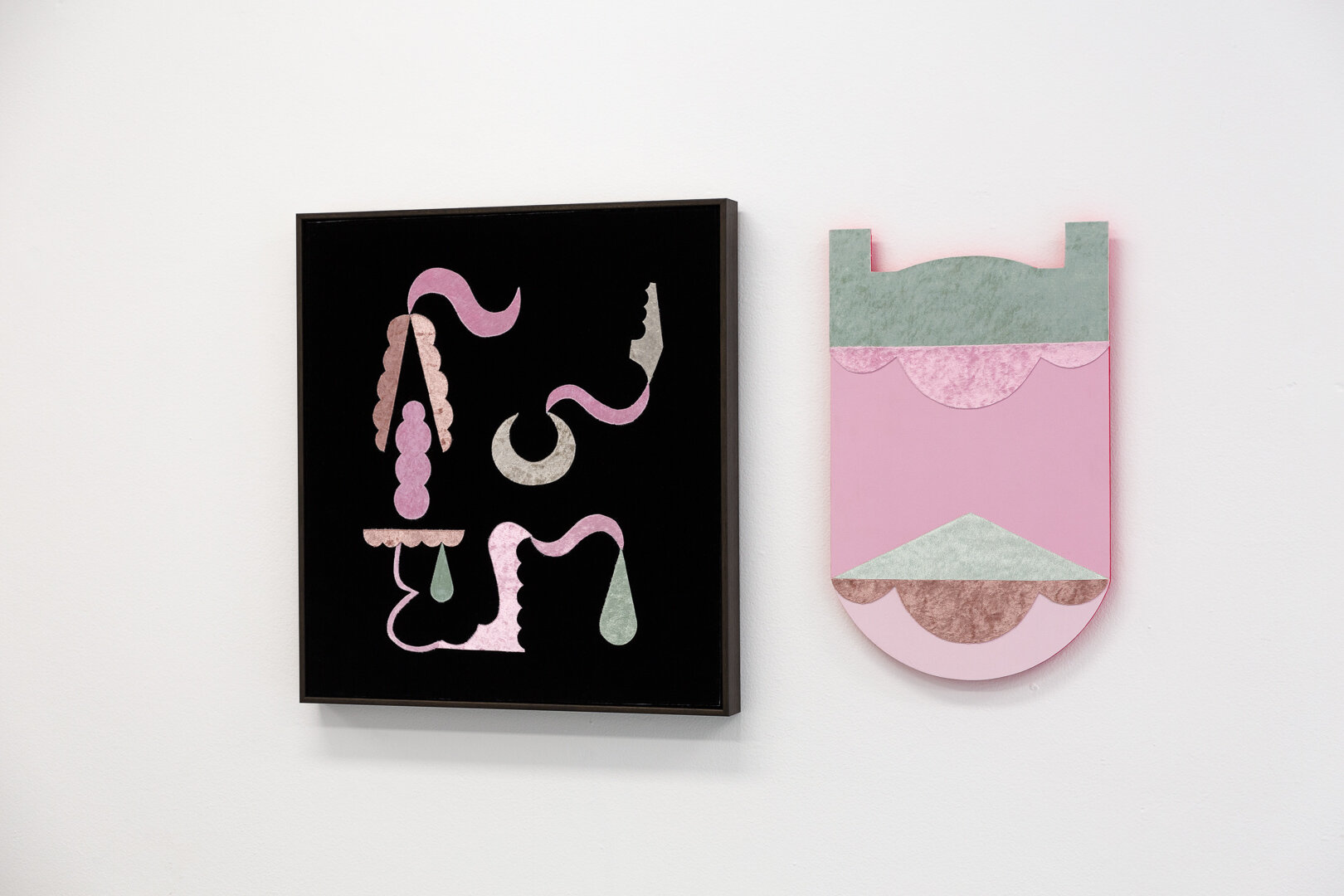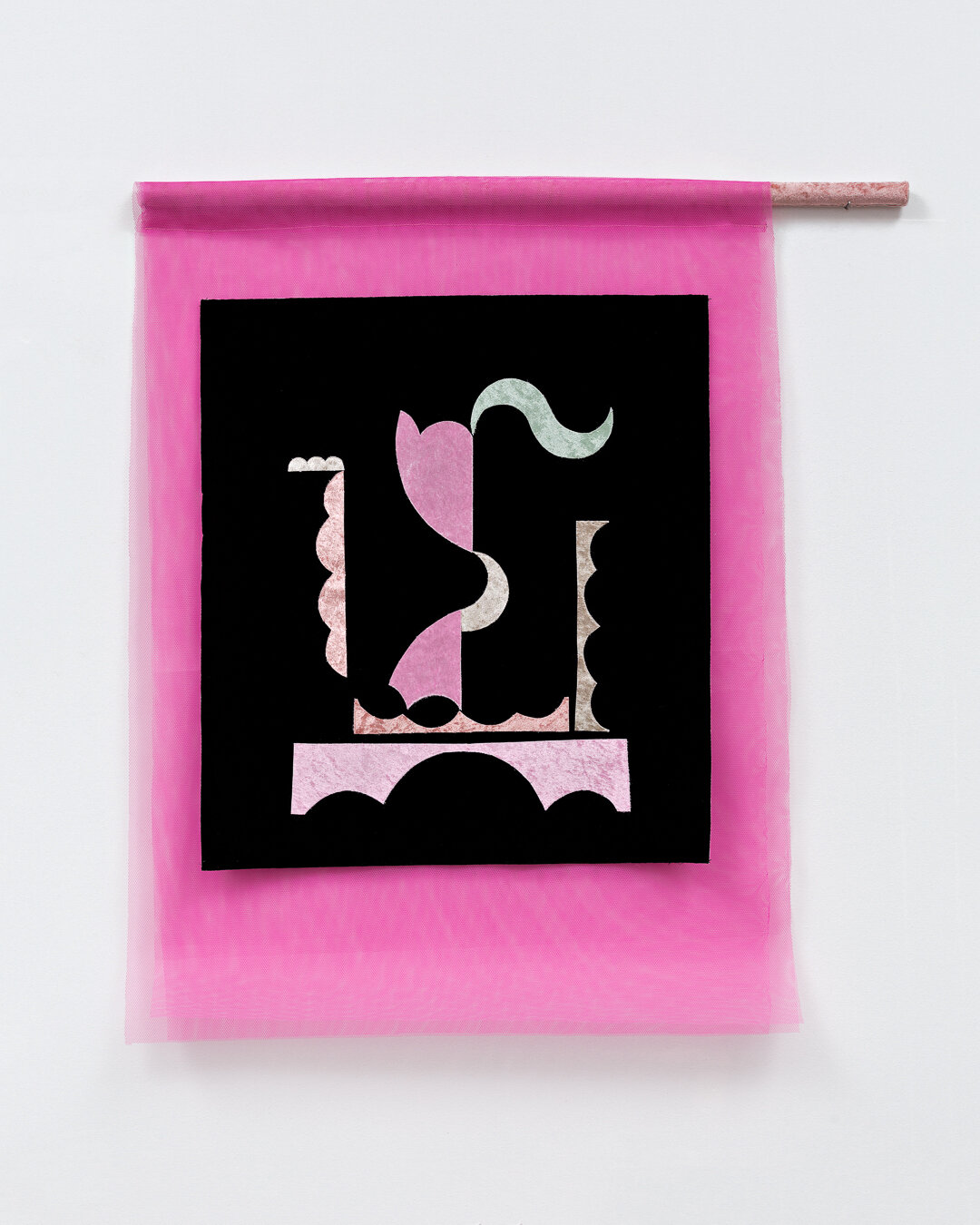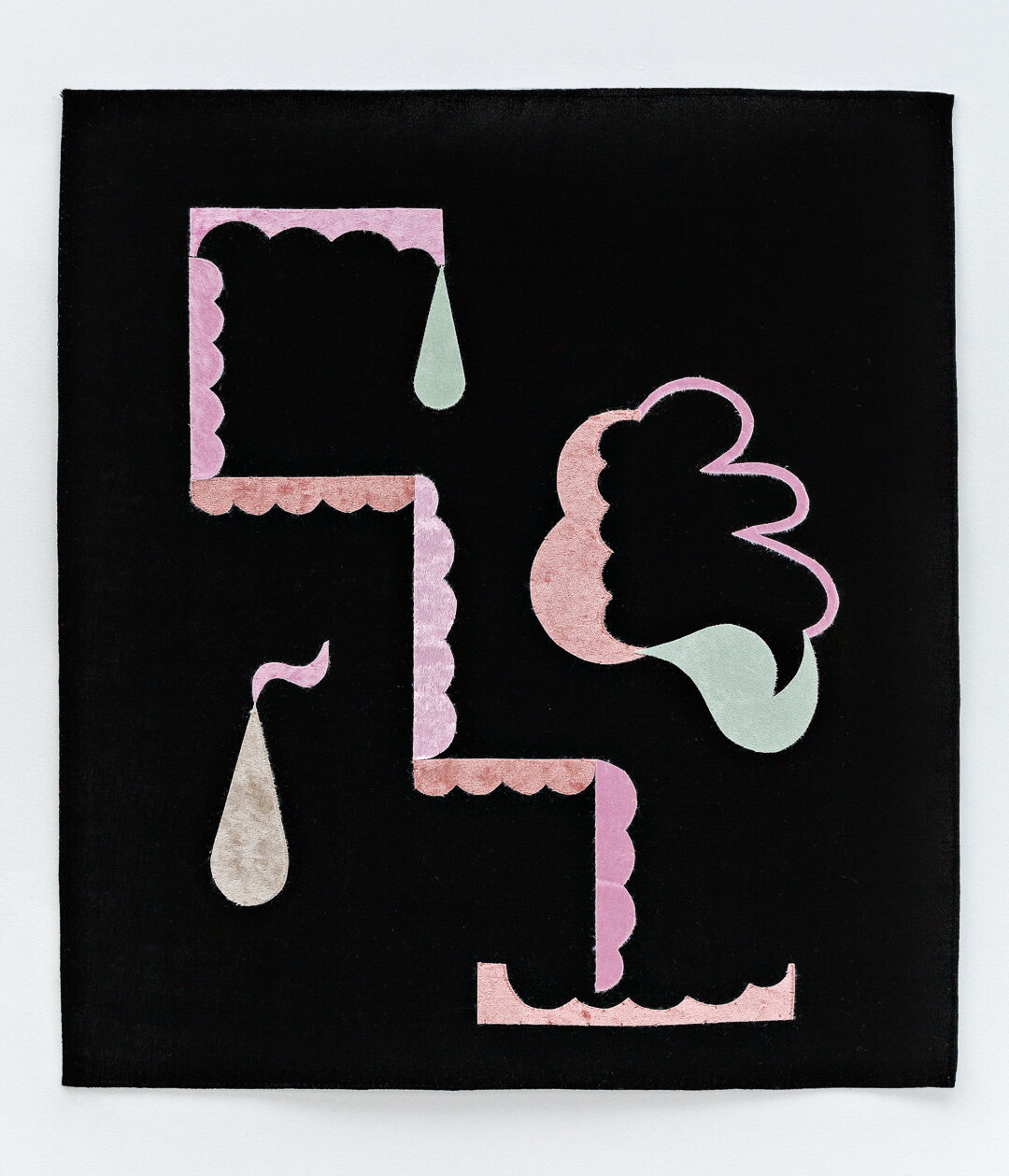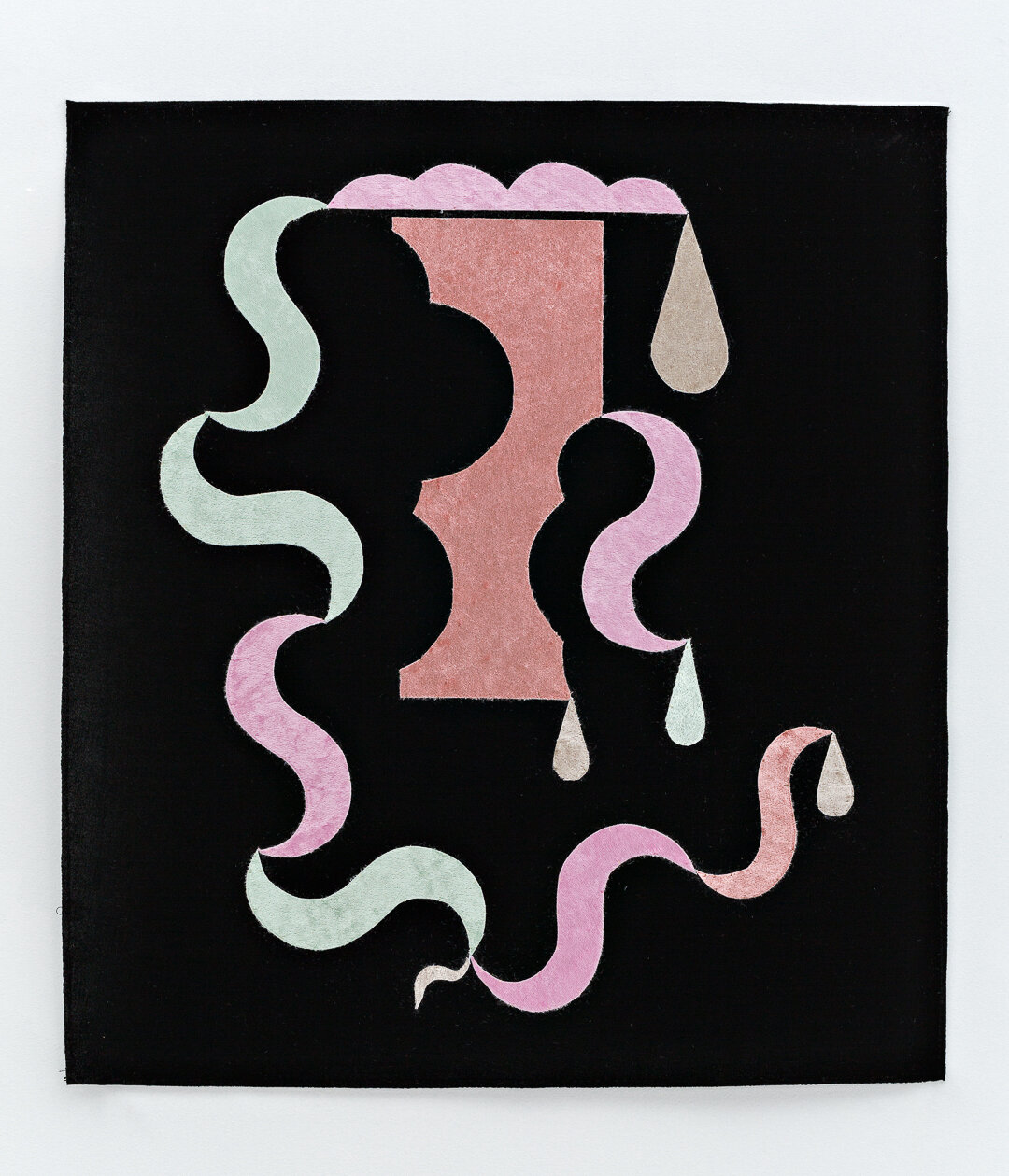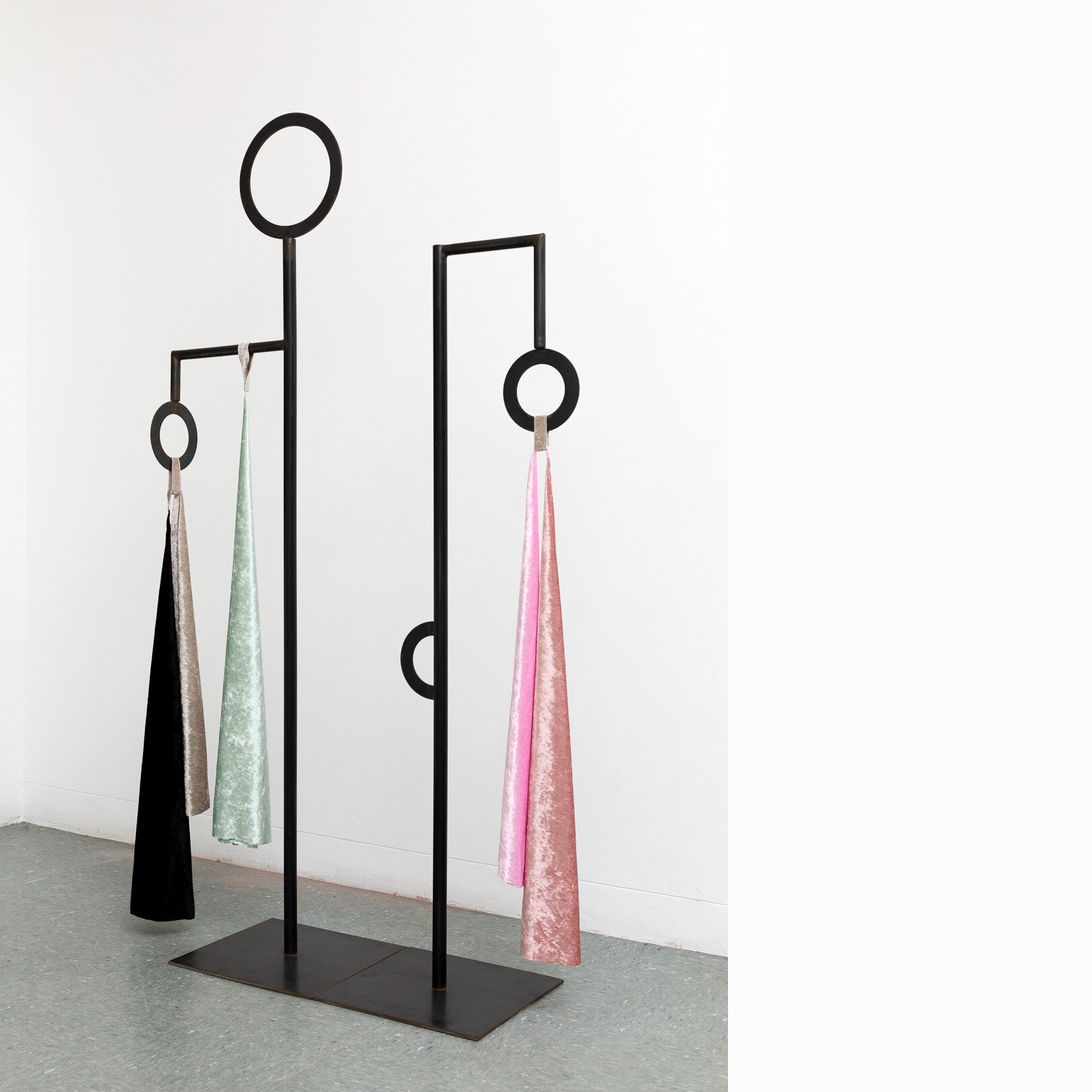VELVETEEN 2019
Stacks Projects , Sydney.
Photography by Document.
HARD CUTS / SOFT EDGES BY REBECCA GALLO
In Velveteen, Ali Noble builds on a vocabulary of shapes, colours and materials that has been evolving through more than a decade of practice. This language is arcane and hieroglyphic, but its letterforms are playful: arabesques, crescents, vaults or aqueducts, rounded scallops like cartoon clouds. These elements are organised without pre-planning into inventions of the subconscious – that great underground city, pushing its spires up into consciousness. Noble’s compositions in Velveteen describe strange machines, diagrams or circuitry that appear to open and close, producing droplets: tears, sweat, blood.
Noble’s process is a combination of instinct and rational decision-making. As such, each composition in Velveteen is gently suspended between spontaneity and order. The shapes are unplanned, but each cut is decisive and permanent, creating both a positive shape and its corresponding negative. Noble eschews hierarchies: nothing goes to waste, and potential discards are accorded equal status to crafted shapes. Playful compositions are meticulously stitched down through slow, careful labour, and calm is created through the imposition of intuitive order.
One striking element of the works in Velveteen, and a departure from Noble’s previous work, is the use of velvet and velveteen. In the recent past Noble used mostly felt: dense, unreflective wool in neon hues. Felt absorbs light greedily, while the vertical pile of velvet (the luxury version of the fabric, usually silk) and velveteen (its thicker, kitschier, cotton cousin) shimmers. Its appearance changes as you circle it. Velvet and velveteen’s respective associations with luxury and kitsch, beauty and brashness hover around the edges of this work, backlit by Rock-Eisteddfod, hot-pink mesh. Noble seems to take defiant joy in the decorative – often a no-go zone in conceptual art – revelling in the complex associations and sensations that these materials induce.
Alongside the textile works, Noble has produced a series of sculptures in mild steel. At first they seem a marked contrast to the wall works: they are solid and unyielding where velvet is soft and pliant. They stand like bodies or signs, solid against the diaphanous fabric. Where the cut-out velveteen shapes refer to things, the sculptures are things. There are also similarities: the lines and circles of the sculptures echo the machine forms of the velveteen drawings. They again articulate both positive and negative space, curved and straight edges. They are both assemblages of materials, cut into a language of shapes and then welded or stitched back together to tell new stories.
Particularly when placed next to sculpture, it can be easy to slip into comparing and contrasting Noble’s velvet works to painting. To declare that they are a softer, feminine or queer version of hard-edge abstraction. That the pale velveteen tones are her palette; black velvet the canvas. That unlike painting, cutting is a reductive process; unlike the paintbrush, the scissors cannot cover and layer over. A painting is not to be touched, while fabric feels like an invitation. But these comparisons are somewhat uncomfortable: they suggest that painting is a superior, aspirational or default form. As if all two-dimensional art that is not painting, is always pointing or aiming towards it. Painting and sculpture have long been upheld as the highest art forms, and it is no coincidence that for hundreds of years, these fields have been (and still are) dominated by male practitioners. It is similarly no coincidence that the artforms (or crafts) traditionally practised by women – including tapestry, cross-stitch and quilting – were assigned a lower cultural value.
Makers and artists have long been pushing against the qualities of mildness, patience and servility traditionally associated with textiles . Sewing, appliqué and embroidery were used by the Suffragists to create protest banners in the early twentieth century . In a nod to this history, Noble’s largest work, with its quilted velvet backing and hanging rod, recalls Suffragette and early trade union banners. Since the 1970s artists have been using textiles and other crafts to express ideas and identities directly at odds with the diffidence demanded of earlier generations, from the embroidered runners of Judy Chicago’s The Dinner Party (1974-79) to the haunting forms of Louise Bourgeois’ fabric sculptures from the 1990s.
Noble’s work forms part of this lineage of textiles as a critical medium in contemporary art. The fabric used in Velveteen was a gift from Noble’s mother, a seamstress who made all of her own and her children’s clothing. Noble helped her mother move into assisted living last year, and it became clear that this fabric would have to find its final form in her own hands. During this time, the studio became a symbol of freedom from the duties of caring for both a parent and a child. Working with textiles – cutting out soft shapes and arranging them against dark, shimmering backdrops like characters on a stage – became an act of resistance. A means of asserting autonomy and identity through a language of intuition, action and subconscious machinations.
Rebecca Gallo, 2019
i Parker, R., 2010. The subversive stitch: Embroidery and the making of the feminine. IB Tauris. p11
ii Hunter, C. in Nowak, M. 2018. Craftivism. Dissident Objects and Subversive Forms. Shepparton Art Museum and National Exhibitions Touring Support Victoria. p4
